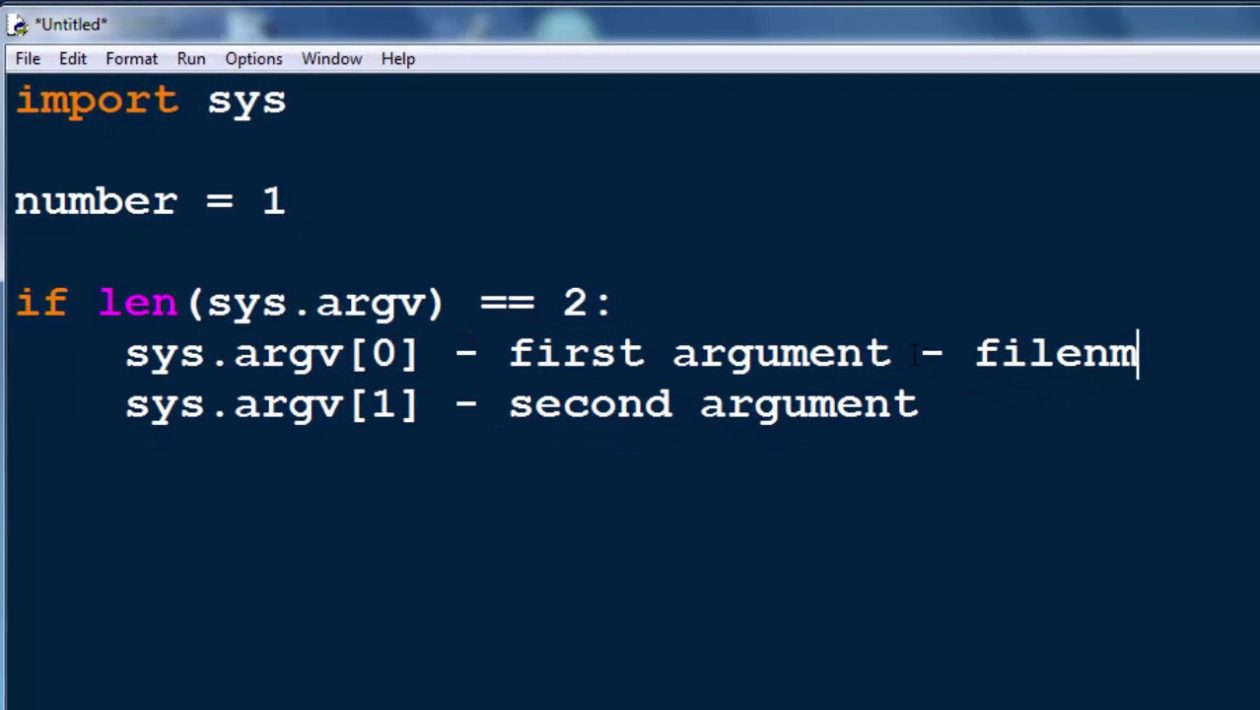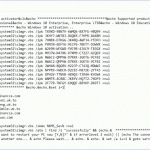Adding the ability to recur python command line arguments can provide a simple interface for content-based order programs. So, the graphical interface is similar to the graphical interface of an obvious application controlled by a graphical widget or gadget.
Python command line arguments open a tool to capture and concentrate your Python order contention. So, these qualities are behaviors that adapt to adjustment procedures. For example, even if your program is unlikely to measure data checks in records, then at this time. So, you will pass the document name to your schedule instead of hard-coding the value in the ASCII text document.
Table of Contents
Through the techniques of this guided exercise, you will know:
- So, the root cause of python command line arguments
- Hidden help for python command line arguments
- Principles of management order interface arrangement
- So, the basics of redoing and handling Python order contention
- Accessible libraries in Python to facilitate the use of excessive order interfaces
By chance, I hope to compete for the program’s Python order, rather than building a dedicated library mercantilistically. By chance, So, i hope to learn more about the dominant and typical reason for the main library dedicated to collecting programs. Python command interface, continue reading now!
Order interface python command line arguments
So, the Order Interface (CLI) provides a path to the client, allowing it to interact with programs running in a content-based shell mediator. Some examples of shell mediators measure Bash on the UNIX work framework or count e-mail on Windows. So, the shell mediator authorizes the order interface, which discovers electronic communications. So, the generated components depict it:
- Order or program
- Zero or one-ton order contention
- Indicates the rate of return after the order
So, the printed document is called the usage rate or encouragement.
Not all order interfaces can provide these components. In any case, considering all these things, this loss is not complete. From adaptability to passing a contention, the order’s nature, to different opinions and decisions. It is the same as the site-specific language. For example, some projects can distribute web documents from orders or start a partner-level smart Shell intermediary program (Python).
Two after models using python command line arguments sequence depict a sequence interface diagram:
$ python-c “print(‘Real Python’)”
Genuine python command line arguments
In the first model, the Python conversion program uses rationality-c to represent orders, that is, execute Pythopython command line arguments order contention as a Python program according to decision-c.
Another model shows the best way to use -h to display Python to display help:
$ python-h
Use: python3 [option] … [-c cmd | -m mod |Record| -] [arg] …
Alternatives and arguments (and compare setting factors):
-b: issue warnings about str (bytes_instance), str (bytearray_instance)
Also, use str to evaluate the byte/byte array. (-Bb: problem error)
[…The complete encouragement text does not appear…]
Try to enter your terminal to check the entire encouragement document.
C’s legacy python command line arguments
Python order contention is obtained directly from the C programming language. As Guido Van Rossum wrote in 1993 for Unix/C programmers writing an introductory partner degree in Python, C influenced Python. Guido specifies the meaning of words, identifiers, administrators, and statements (such as break, proceed, or return). Also, the usage of Python order contention may be affected by the C language.
To describe the similarity, consider the generated C program:
/main.c
#include
int main (int argc, singe * argv []) for (int I = 0; I <argc; i ++) {
printf(“Parameter %6d: %s\n”, I, argv[i]);
“>
Bring back 0
}
The fourth line describes the characteristics of Principle(), which will be part of the program’s motivation. Pay good attention to the boundaries:
argc is the partner degree number related to the degree of program competition.
argv is the partner-level prompt group, containing the program name’s characters included in the exhibition’s essential part. It is tracked by the program’s contention (if any) located in the group’s remaining portion.
You can use GCC-o basic main. c to arrange higher code than on UNIX. At this time, please use ./principle to get the attached code:
$ GCC-o main.c python command line arguments
$ ./Basic
Competitive Tally: One
Competition 0: ./Basic
Unless you explicitly communicate -o by the decision and command, a.out is the default name of the function generated by the GCC compiler. It represents the output of PC programs and is similar to executable files created on older UNIX working frameworks. So, please note that the name of the function ./fundamental is the only contention.
We should help this situation by passing various Python order contentions to similar programs:
$ ./principle Python order parameters
Competition check: Five
Contention 0: ./principle
Argument 1: Python
Competition 2: Command
Competition 3: OK
Argument 4: Argument
The rate of return indicates that the metric for contention is 5. Hence, the reduction in opinion includes the program’s name, which is tracked by each expression of the expression “Python order Arguments” passed in the command.
Note: argc stands for competition check, and argv stands for competition vector. To discover a lot of content, you can understate it on C Primer / C order Arguments.
So, the accumulation of main. C expects you to use only the UNIX or mack OS framework. On Windows, you will use one of the following results to syndicate the program:
UNIX Windows Framework (WSL): There are not many UNIX distributions, such as Ubuntu, OpenSUSE, and Debian. You will introduce it from the Microsoft Store.
Windows generation tool: It contains the front part of Windows order manufacturing tool, Microsoft C/C++ compiler cl.exe, and C/C++ compiler named clang.exe.
Microsoft Visual Studio: This is usually Microsoft’s most collaborative improvement environment (IDE). Come and discover a lot of knowledge about the day, just like Windows, it will be used for every Python and C in various active frameworks, just like in Windows, you also know something about Python day and the code editor (guide).
Mingw-64 Enterprise: This supports the GCC compiler on Windows.
If you have placed it in Microsoft Visual Studio or Windows Build Tools, you need to order main. C as follows:
C:/> cl main.c
You will get a partner degree function called main.exe. Start with the following code:
C:/>Main
Competitive Tally: One
Argument 0: Principle
You can execute a Python program main.py, for example, the program main.c you saw earlier:
#Main.py
Import system python command line arguments
Occasionally __name__ == “__main__”:
print(f “Total parameters:”)
For me, the arg in enumerate (sys.argv):
print(f “Argument:”)
You will not see the buddy degree argc variable like in the C code model. Since sys. argv is sufficient. It does not exist in Python. You will cancel the Python sequence contention in sys. argv, but you cannot grasp the reduced length of time, and if the program needs a measure of view, you will choose the established len().
Also, please note that when the identify() is applied to the associativity and iterable, it will return the buddy list object, which will generate a section file in sys. Arg that has a comparative value with the buddy. This will emphasize the essence of sys—are without dealing with the counters recorded in summary.
Execute main.py as follows:
$ python main.py Python order parameters
Competition Statistics: Five
Contention 0: main.py
Argument 1: Python
Competition 2: Command
Competition 3: OK
Argument 4: Argument
Sys. Args contains the same information as the C program:
The name of the program main.py is the basis of the summary.
Contending for Python, Command, Line, and Arguments constitutes a redundant part of the summary.
With a brief introduction to the C language’s obscure parts. So, you can now grasp some essential data to deal with any Python order contention.
Two utilities in the world of UNIX operating system
To use Python to request disputes in this guided exercise. So, you will perform most of the options of the two utilities in the natural framework of the UNIX working structure:
sha1sum
sequence
You will get some information about these gadgets of UNIX working structure in some content.
sha1sum
sha1sum processes SHA-1 hashes and has been adjusted to a large extent to confirm the report’s correctness. For a given data, hash work endlessly re-establishes indistinguishable value. So, Any subtle changes within the information will cause undoubted hash values. Before using a utility with strict restrictions, you will try to display help:
$ sha1sum-help
Use: sha1sum [option] … [file] …
Also, or check the SHA1 (160 pieces) checksum.
Even If there is no FILE, or once FILE is -, check the regular data.
-b,-double-check
-c,-check and check SHA1 aggregation in the file and check them
-Confirmation of name generation BSD style
So, check text in substantial mode (default)
So, the zero result of each result line is NUL instead of a newline character,
Also, keep the album title moving.
[…Fully inspired text not shown…]
So, the help of the demo requester may be an average component displayed in the request interface.
To calculate the SHA-1 hash value of the record content, proceed as follows:
$ sha1sum main.c
125a0f900ff6f164752600550879cbfabb098bc3 main.c
So, the result shows the SHA-1 hash value, the underlying field. Also, the name of the record in this way based on the fact of the next area. So, the order will accept a form as contention:
$ sha1sum main.c main.py
125a0f900ff6f164752600550879cbfabb098bc3 main.c
d84372fc77a90336b6bb7c5e959bcb1b24c608b4 main.py
Considering the UNIX work framework terminal’s ace development highlights. So, it is possible to provide Python order contention with exceptional circumstances characters jointly. One such name is the indicator or asterisk (*):
$ sha1sum main. *
3f6d5274d6317d580e2ffc1bf52beee0d94bf078 main.c
f41259ea5835446536d2e71e566075c1c1bfc111 main.py
FAQ of python command line arguments
How to pass parameters in python command line?
To use the getopt module, you need to remove the first element from the command line parameter list.
Syntax: getopt.getopt (a
RGS, options, [long_options])
parameter:
args: The list of parameters to be passed.
options: A string of option letters to be recognized by the script.
How to pass the file path as a parameter in Python?
To pass the file name from bash to python, use sys. argv[1] in order to get the file name from the parameter: use open(sys.argv[1],’r’) as in_file to import sys. Then, you can use various A functions that can use multiple parameters, which can be objects, variables (same or different data types), and functions.
How to pass command line parameters in Python idle state?
1) Even If necessary, you can directly call the “main” function with parameters on the IDLE console. 2) So, You can add a test line before the main function call to provide a parameter array (or create a unit test that performs the same function), or set sys. argv directly.
How to run command line parameters?
In order to pass command line parameters, we usually define main() with two parameters: the first parameter is the number of command line parameters, and the second is a list of command line parameters. So, the value of argc should be a non-negative number. argv (ARGument Vector). So, It is an array of character pointers listing all parameters.











